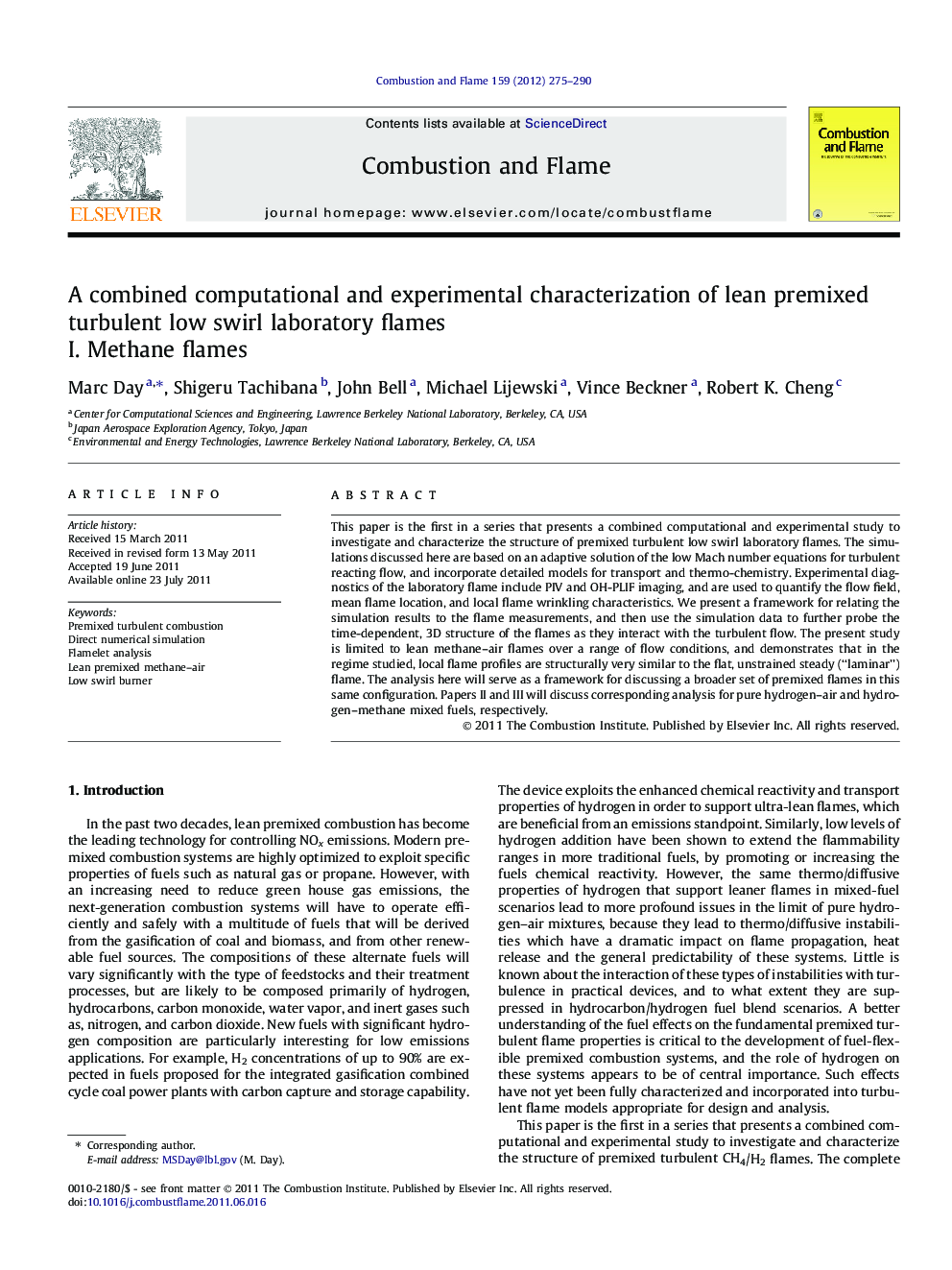| Article ID | Journal | Published Year | Pages | File Type |
|---|---|---|---|---|
| 169173 | Combustion and Flame | 2012 | 16 Pages |
This paper is the first in a series that presents a combined computational and experimental study to investigate and characterize the structure of premixed turbulent low swirl laboratory flames. The simulations discussed here are based on an adaptive solution of the low Mach number equations for turbulent reacting flow, and incorporate detailed models for transport and thermo-chemistry. Experimental diagnostics of the laboratory flame include PIV and OH-PLIF imaging, and are used to quantify the flow field, mean flame location, and local flame wrinkling characteristics. We present a framework for relating the simulation results to the flame measurements, and then use the simulation data to further probe the time-dependent, 3D structure of the flames as they interact with the turbulent flow. The present study is limited to lean methane–air flames over a range of flow conditions, and demonstrates that in the regime studied, local flame profiles are structurally very similar to the flat, unstrained steady (“laminar”) flame. The analysis here will serve as a framework for discussing a broader set of premixed flames in this same configuration. Papers II and III will discuss corresponding analysis for pure hydrogen–air and hydrogen–methane mixed fuels, respectively.
